Daniel Buren takes over the rooftop of Le Corbusier’s Cité Radieuse with ’Défini, fini, infini’
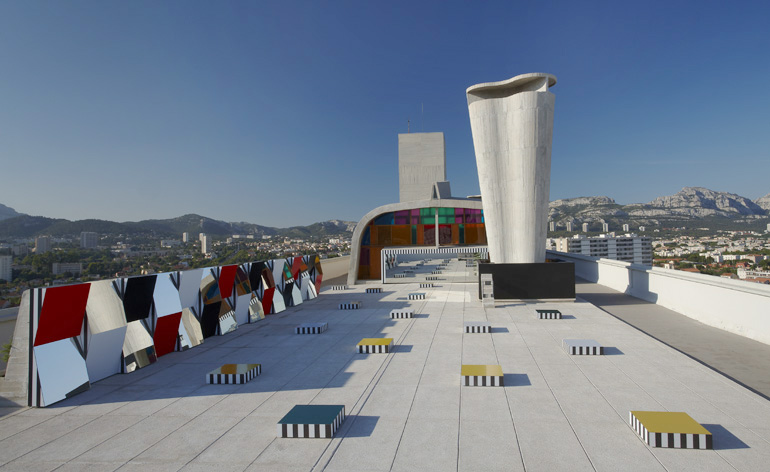
Ora-Ïto's gallery atop the Cité Radieuse in Marseille was a transformative intervention when it opened last year. We spoke to the French designer, curator and all-round motivator about the MAMO in early 2013 (W*169), and got the low-down on the lengthy process of turning this iconic slice of Le Corbusier into a must-visit urban gallery. The MAMO Audi Talents Award is both gallery and springboard, as well as a stunning restoration of the building's original gymnasium. And now it is playing host to the work of French sculptor Daniel Buren.
For Défini, fini, infini, Buren has toyed with Corbusier's composition, creating seven vast but integrated artworks to further the viewer's experience of this liminal space, a platform to look down upon Marseille (the joint-winner of our 2014 Best City award).
Buren's response has been to intersperse this rooftop landscape with his own aesthetic interventions, a series of long sculptural elements that respond directly to the raw concrete, bold flowing forms and the distant mountain ranges that fringe the city. The two dominant elements include the vast 400 sq m mirror designed to reflect the poured concrete perfection of Le Corbusier's façade and the grid of Buren's signature striped columns, this time set up as square protrusions that evoke the concrete frame of the building below.
Colour also plays an important role. As Ora-Ïto says, 'Le Corbusier was very inspired by Mondrian,' and Buren has deployed pure blocks of colour to contrast with the blue Mediterranean skies and grey walls. We spoke to the artist and designer about the project.
How does MaMo function?
Ora-Ïto: We invite big artists every summer to show inside and outside on the terrace and gymnasium. In the winter we use the interior space to promote young artists. The summer shows are specifically made for the space - very high quality installations like you would find in a gallery. Daniel's work is very emotional - I'm convinced I've made a good choice - it's something that gets into your head and you cannot leave it. Daniel approached the space in a very different way to Xavier [Veilhan], which is exactly what I wanted. The next artist will have a lot of problems following this.
How did the collaboration with Daniel Buren come about?
Ora-Ïto: The opening exhibitions last year were like an homage to Le Corbusier. But what I was waiting for was to emancipate Corbusier and not be in his shadow. It's a very charismatic building and not a lot of artists can take the power from the place. Daniel was so busy around the world, working in Paris, on the Opera, in Strasbourg, so I contacted his gallerist, Kamel Mennour, and asked him for a meeting - I had to be very persistent. At first he was not really sure when he saw the space, but he became more and more confident in the project. And now here we are.
Daniel, how did you feel about working in such a space?
Daniel Buren: It's not easy to begin with - but it's the kind of space where you can do your best and be as critical and enthusiastic as you can. It's like the Palais Royale, an eighteenth century building. There's a risk of being overshadowed by a masterpiece.
Receive our daily digest of inspiration, escapism and design stories from around the world direct to your inbox.
How well does the building work as a place for art?
Ora-Ïto: It's like a white piece of paper - every year an artist has to create something from scratch. But this is a deconstruction of the building - no-one has ever seen the Cité Radieuse like this.
Daniel Buren: I knew the building back in the 1960s and again in the 80s. Years and years ago. Now it's really the best it's ever been - it's very much closer to the original.
Is there a strong architectural dimension in your work?
Daniel Buren: I jump from place to place, from the banal to the outdoors to great art galleries. And you can see the differences. If I go from somewhere anonymous to a place where you have to confront the context and the history and the people living there, then I am much more aware of the architecture.
How do you both feel your relationships - and those of the city's inhabitants - have changed with the Cité Radieuse?
Ora-Ïto: Originally this building was far from the city, but now the city has joined the building. So the idea of a gymnasium wasn't really working as the facilities are on people's doorstops. I'm now 100% sure that this part of the Cité was made for art, whether it's film, theatre or sculpture, and then I did some research and found that the building played a part in the 1956 Festival de l'Art d'Avant-garde.
Daniel Buren: The show will bring more people and different people. It's a very, very intelligent building, and they will finally see it for real.
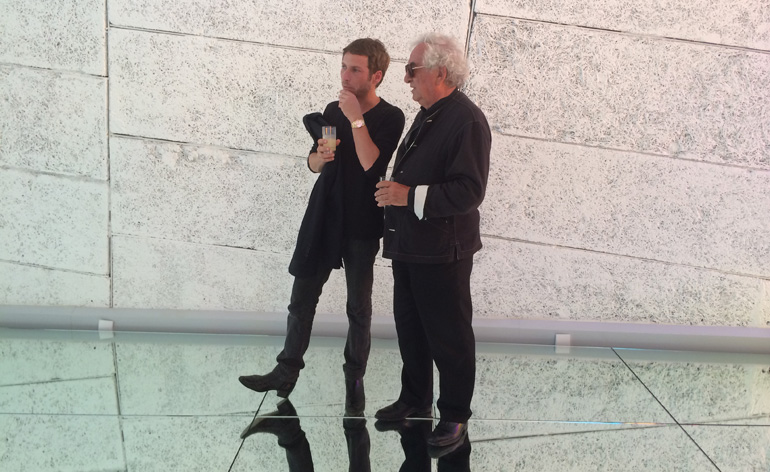
French designer, curator and MAMO-founder Ora-Ïto and artist Daniel Buren
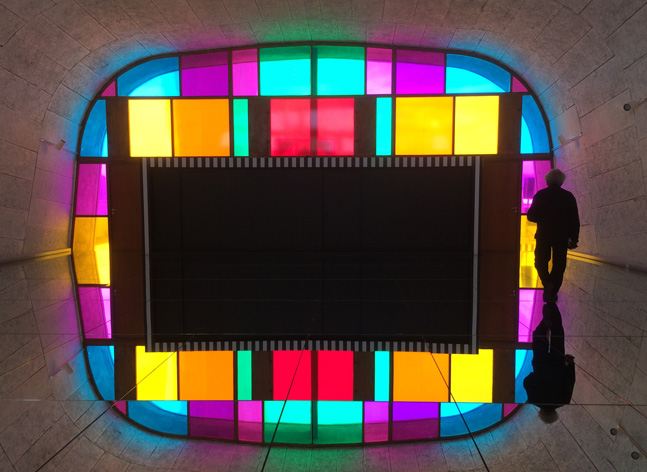
Multi-coloured panels of glass frame a vast 400 sq m mirror that - from the outside - plays with the perspective and architecture of the building
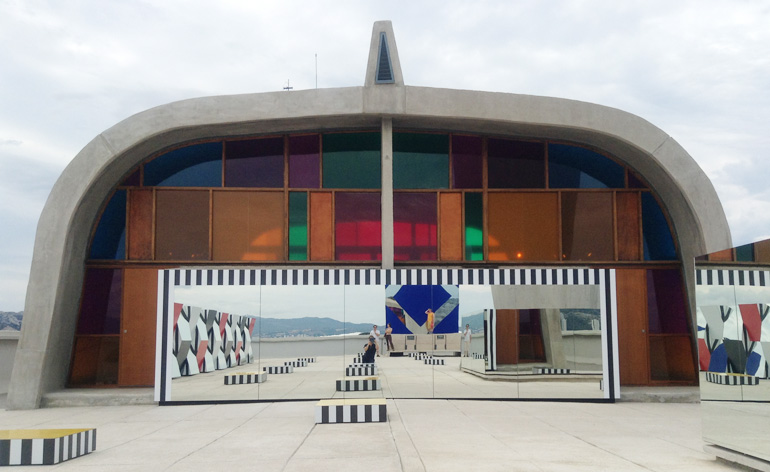
The mirror is framed by monochrome graphics, picked up in other elements of Buren's installation
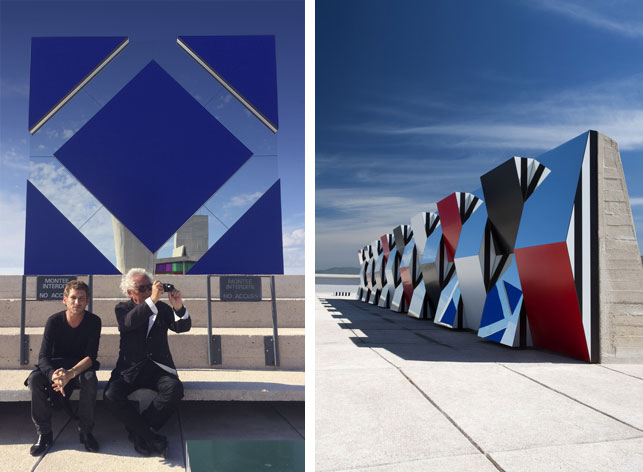
'Daniel's work is very emotional,' says Ora-Ïto (pictured, left, with Buren). 'It's something that gets into your head and you cannot leave it.' Right: The artist's sculptural interventions reflect and shake up the surrounding architecture and landscape. Photography: Sébastien Véronèse; © DB - ADAGP, Paris, 2014 / © Fondation Le Corbusier / ADAGP, Paris, 2014
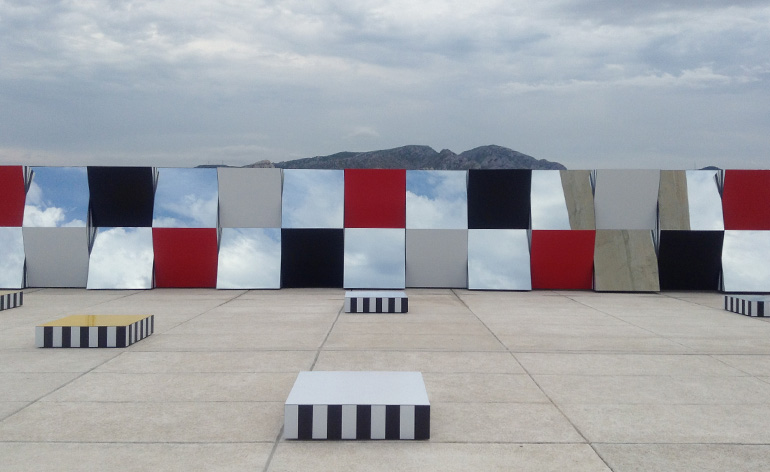
The sky becomes part of the installation
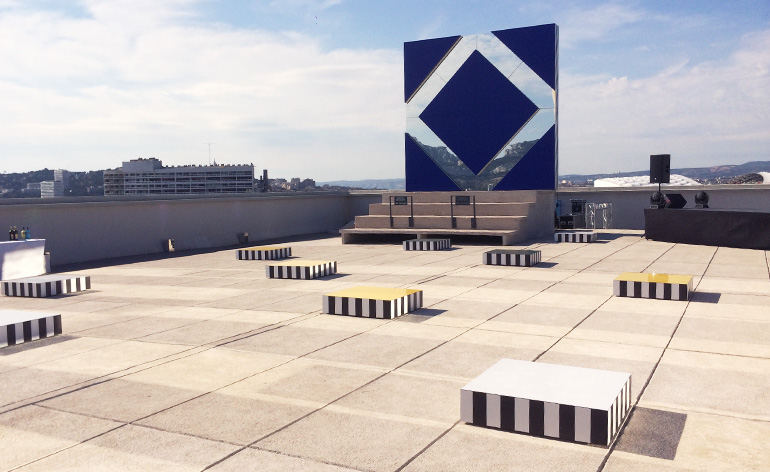
Colour also plays an important role. As Ora-Ïto says, 'Le Corbusier was very inspired by Mondrian,' and Buren has deployed pure blocks of colour to contrast with the blue Mediterranean skies and grey walls

The installation puts a new spin on Marseille - crowned Best City in our 2014 Design Awards
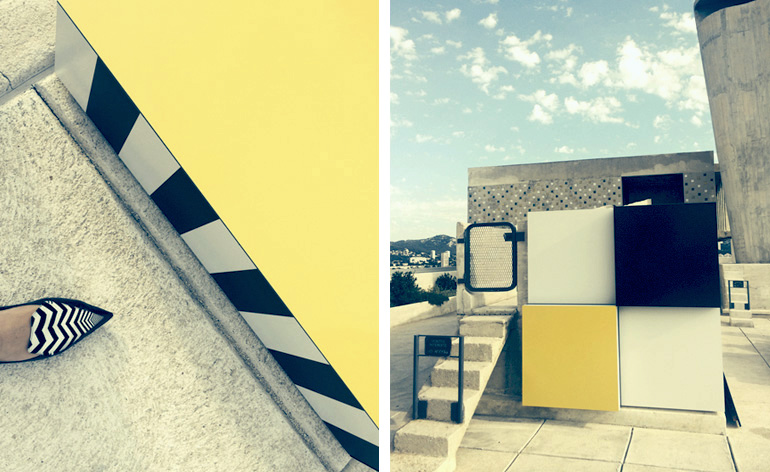
Left: A visitor's shoe echoes Buren's graphics. Right: A Mondrian-like panel interacts with the patterns of the terrace below
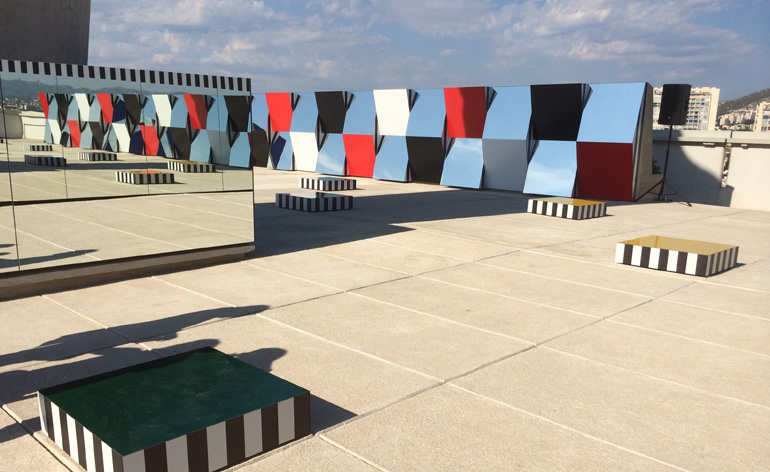
The reflective panels manipulate the dimensions of the space
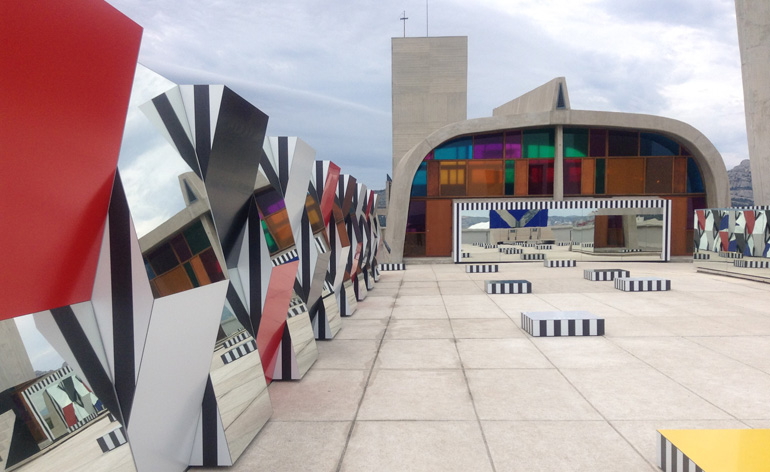
Buren's installation will remain in situ until 30 September
ADDRESS
Centre d'art de la Cité Radieuse
280 Boulevard Michelet
13008 Marseille
France
Jonathan Bell has written for Wallpaper* magazine since 1999, covering everything from architecture and transport design to books, tech and graphic design. He is now the magazine’s Transport and Technology Editor. Jonathan has written and edited 15 books, including Concept Car Design, 21st Century House, and The New Modern House. He is also the host of Wallpaper’s first podcast.
-
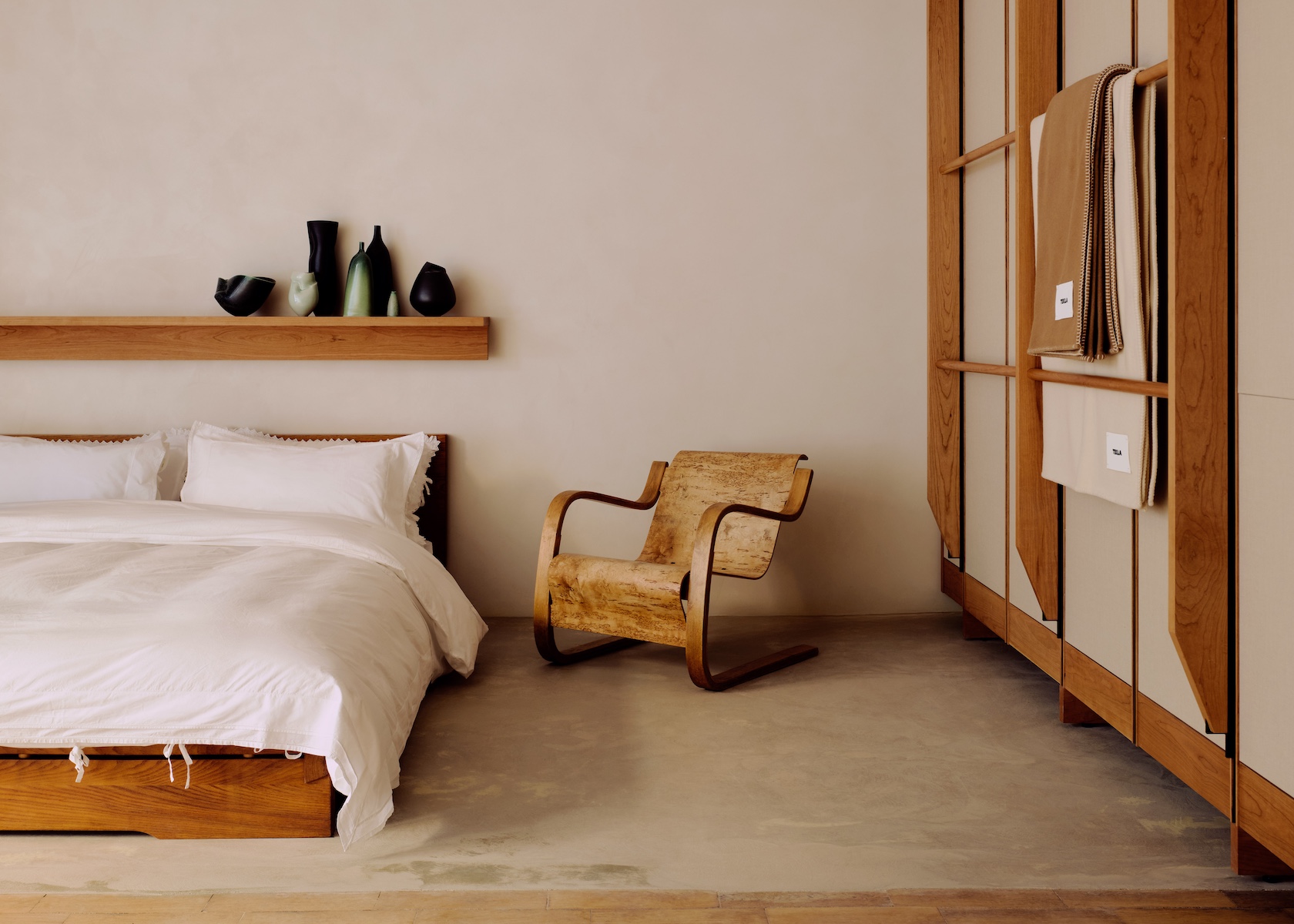 Tekla’s ‘soft and inviting’ London store is made to feel like you’re coming home
Tekla’s ‘soft and inviting’ London store is made to feel like you’re coming homeOpening on Marylebone High Street this week, the brand’s founders Charlie Hedin and Kristoffer Juhl talk to Wallpaper* about the domestic-inspired space, which marries elements of Danish and British design
-
 St. Regis Hotels and Resorts illustrates its spirit of celebration
St. Regis Hotels and Resorts illustrates its spirit of celebrationA collaboration between St. Regis and New York artist Tug Rice captures the storied brand’s Gilded Age glamour and decadent modernity
-
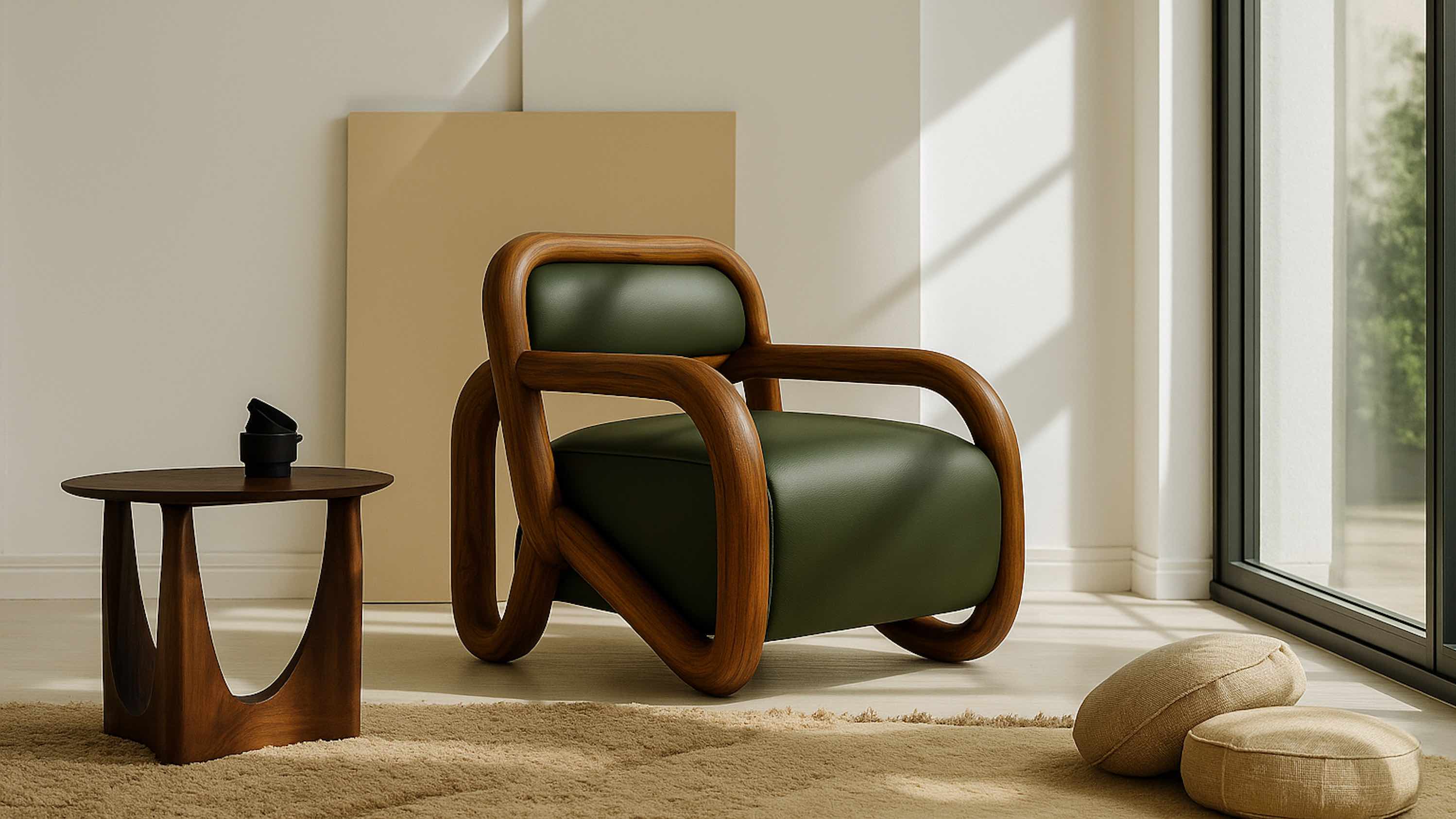 Five women-led studios reshaping Indian creativity at Design Mumbai 2025
Five women-led studios reshaping Indian creativity at Design Mumbai 2025Design Mumbai 2025 opens 26-29 November – Wallpaper* meets five women-led local brands exhibiting at this year's show
-
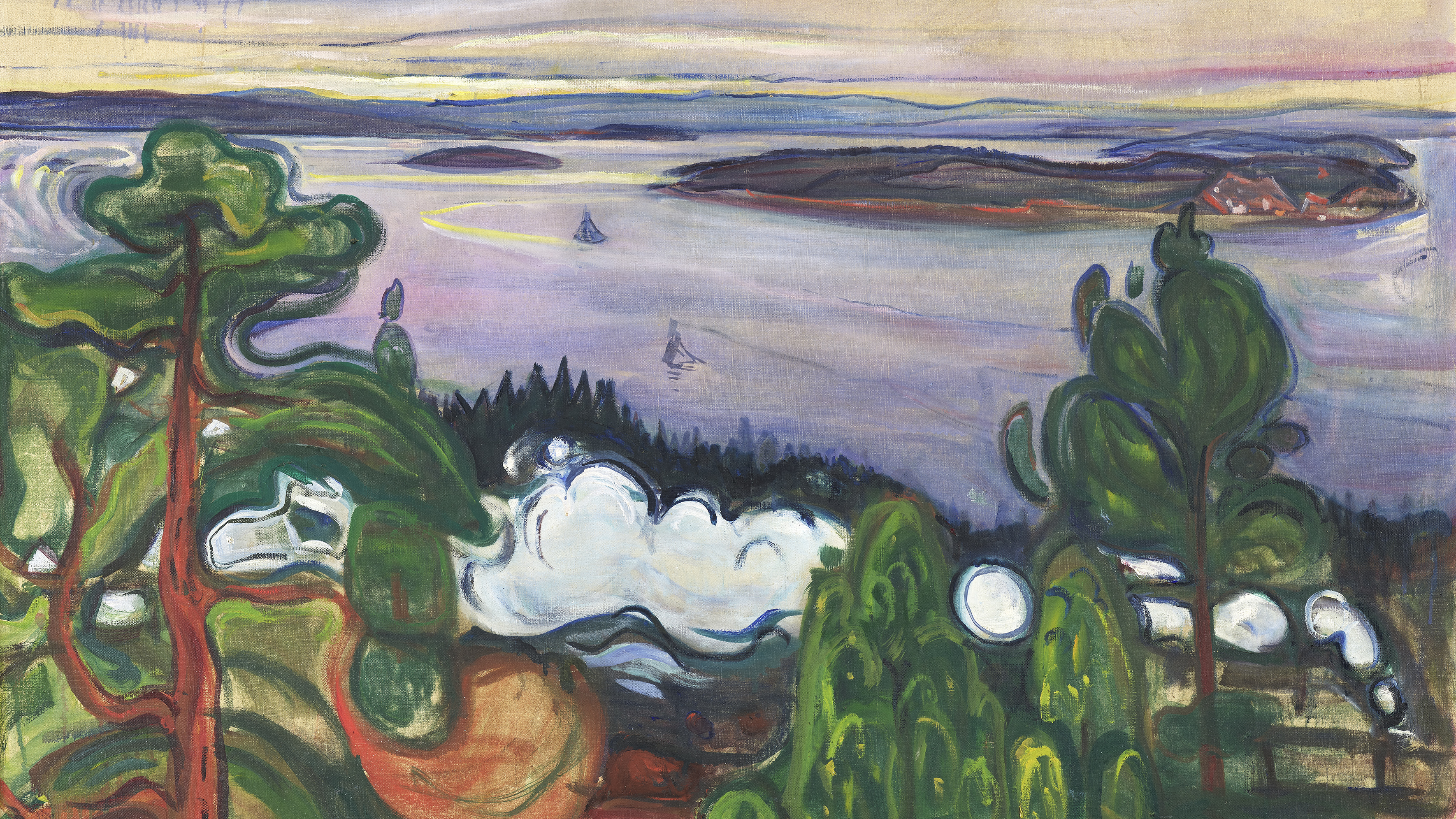 Switzerland’s best art exhibitions to see in 2025
Switzerland’s best art exhibitions to see in 2025Art fans, here’s your bucket list of the standout exhibitions to see in Switzerland in 2025, exploring compelling themes and diverse media
-
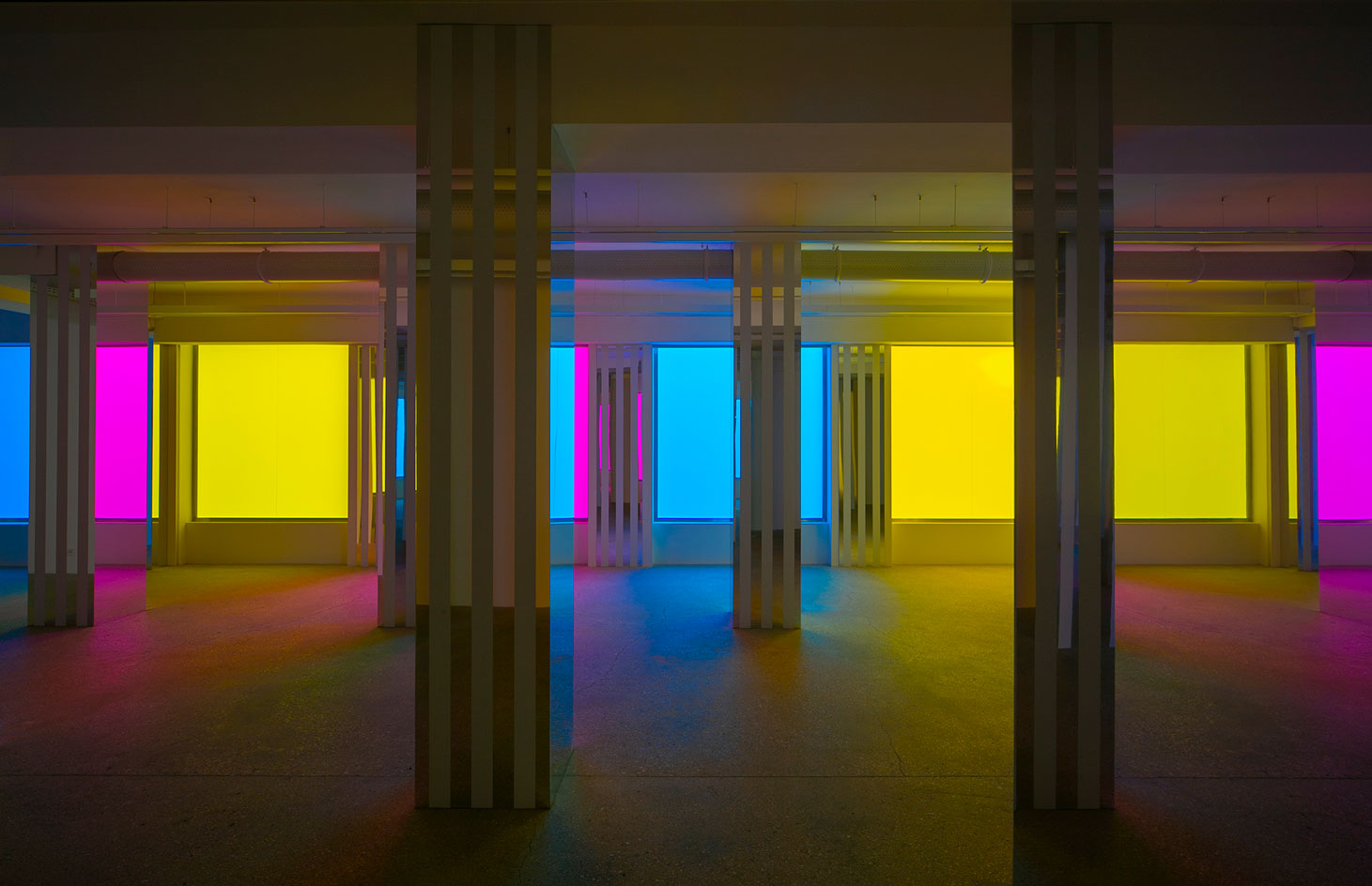 Philippe Parreno and Daniel Buren cast spectral shadows in Paris
Philippe Parreno and Daniel Buren cast spectral shadows in ParisInaugurating Kamel Mennour’s fifth gallery space, designed by Pierre Yovanovitch, the French artists unveil their first joint exhibition, and it raises more questions than answers
-
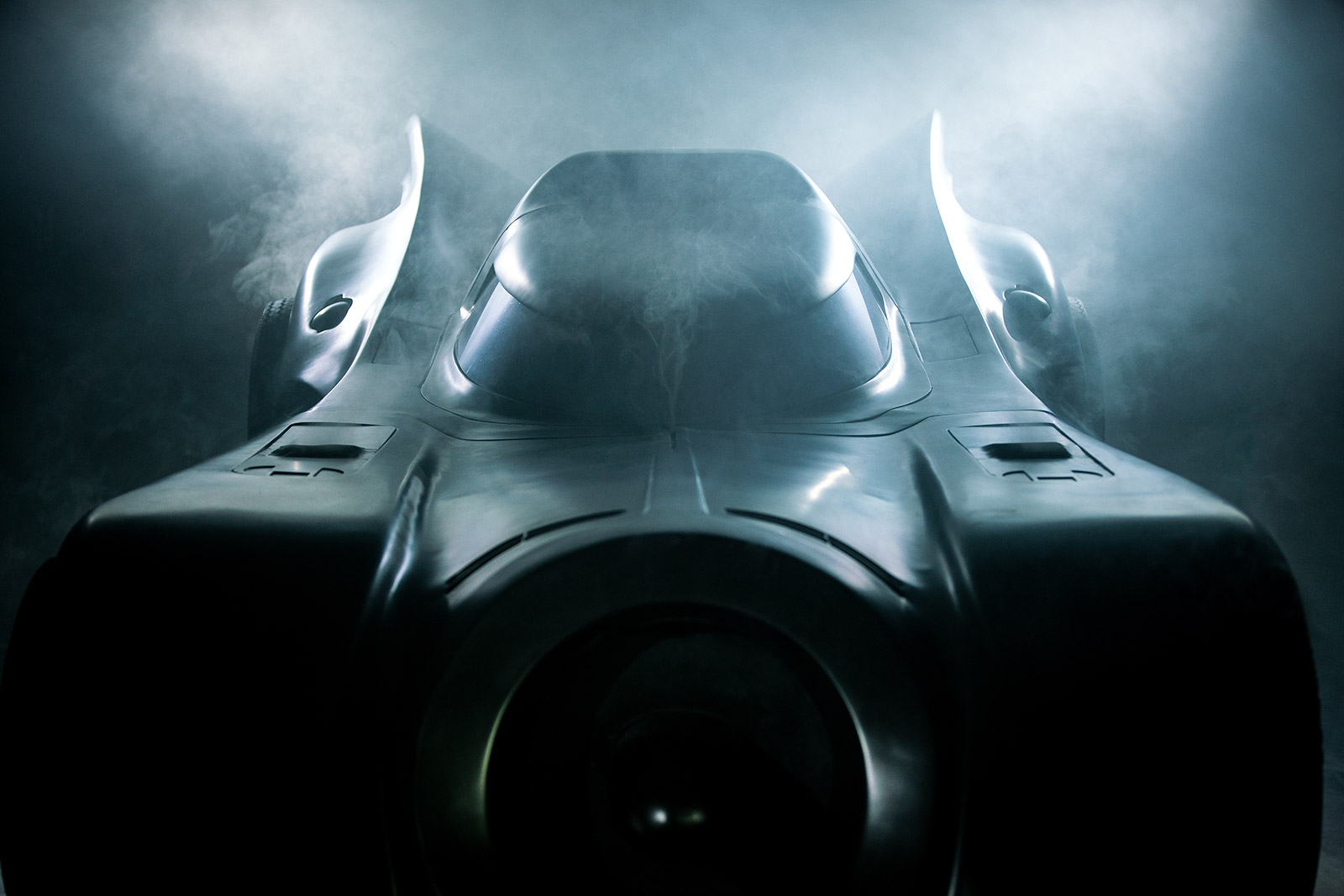 Alex Israel mines Batman lore for Marseille exhibition
Alex Israel mines Batman lore for Marseille exhibitionThe Los Angeles-based artist commandeers the brutalist rooftop of Le Corbusier’s Unité d’Habitation with an homage to the Gotham superhero
-
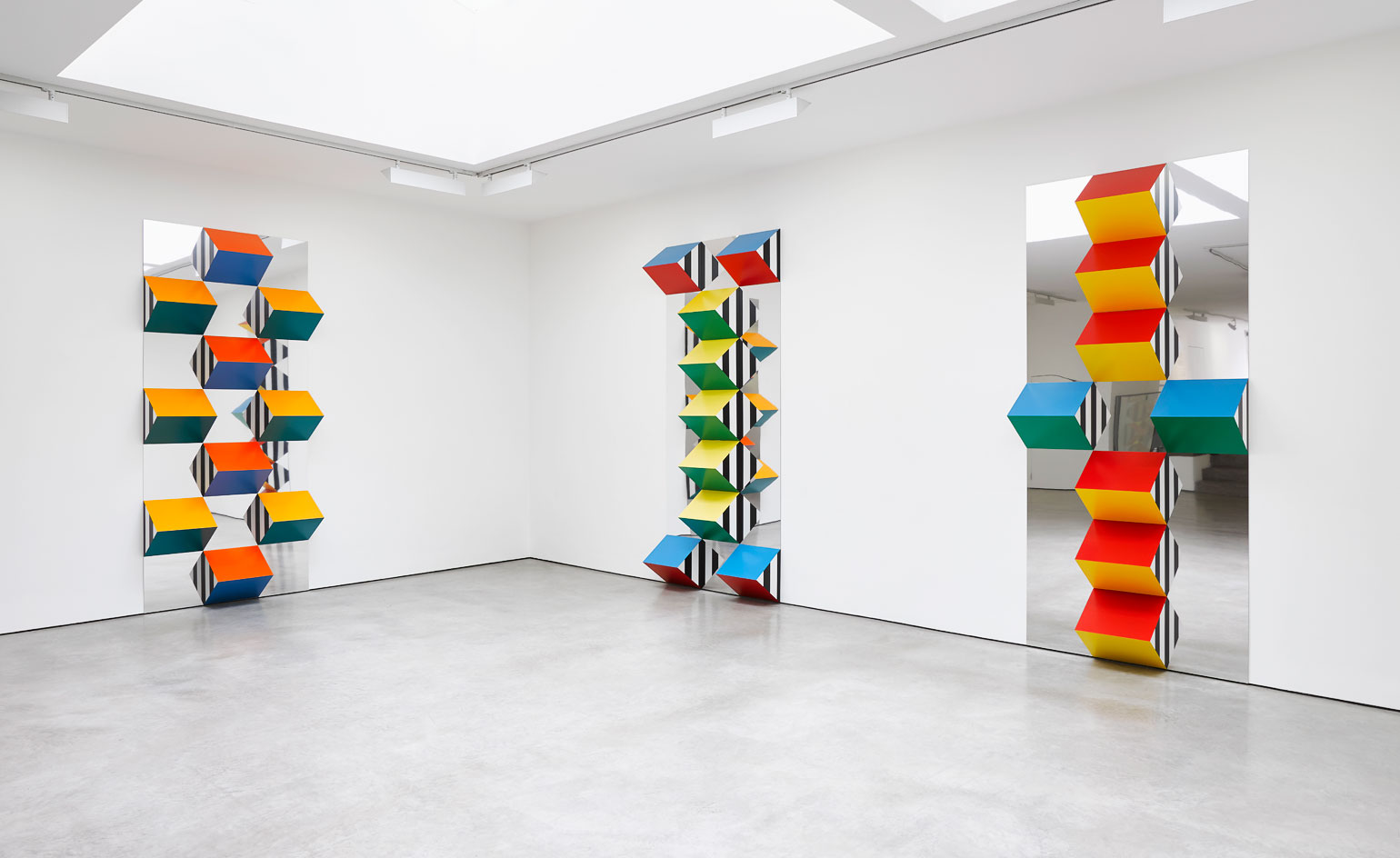 Working the room: Daniel Buren sheds light on his new installation
Working the room: Daniel Buren sheds light on his new installation -
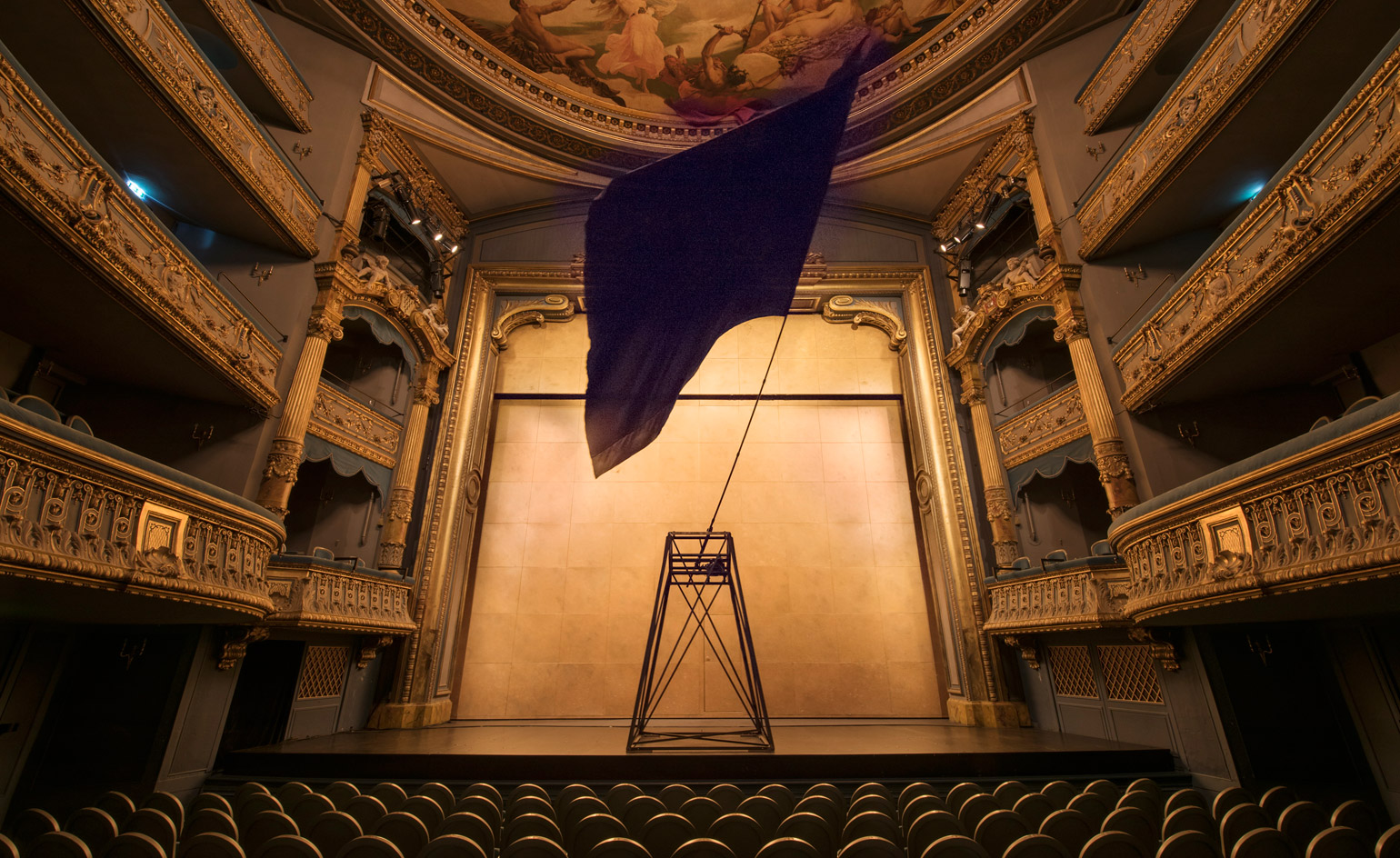 Le Voyage à Nantes 2017: micro-homes, petrified palm trees and a steampunk menagerie
Le Voyage à Nantes 2017: micro-homes, petrified palm trees and a steampunk menagerie -
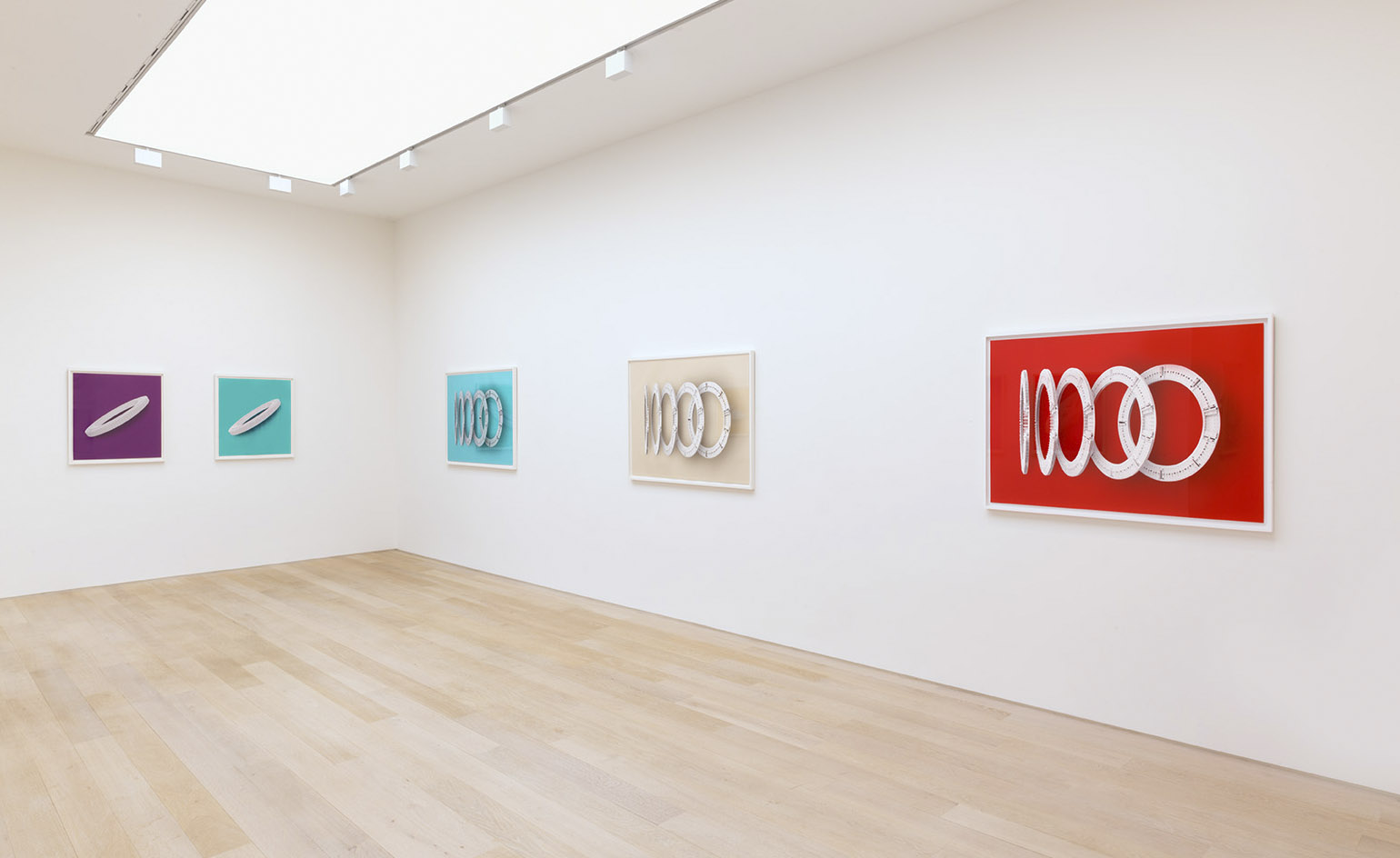 Cyber space: artists Langlands & Bell explore the architecture of tech titans
Cyber space: artists Langlands & Bell explore the architecture of tech titans -
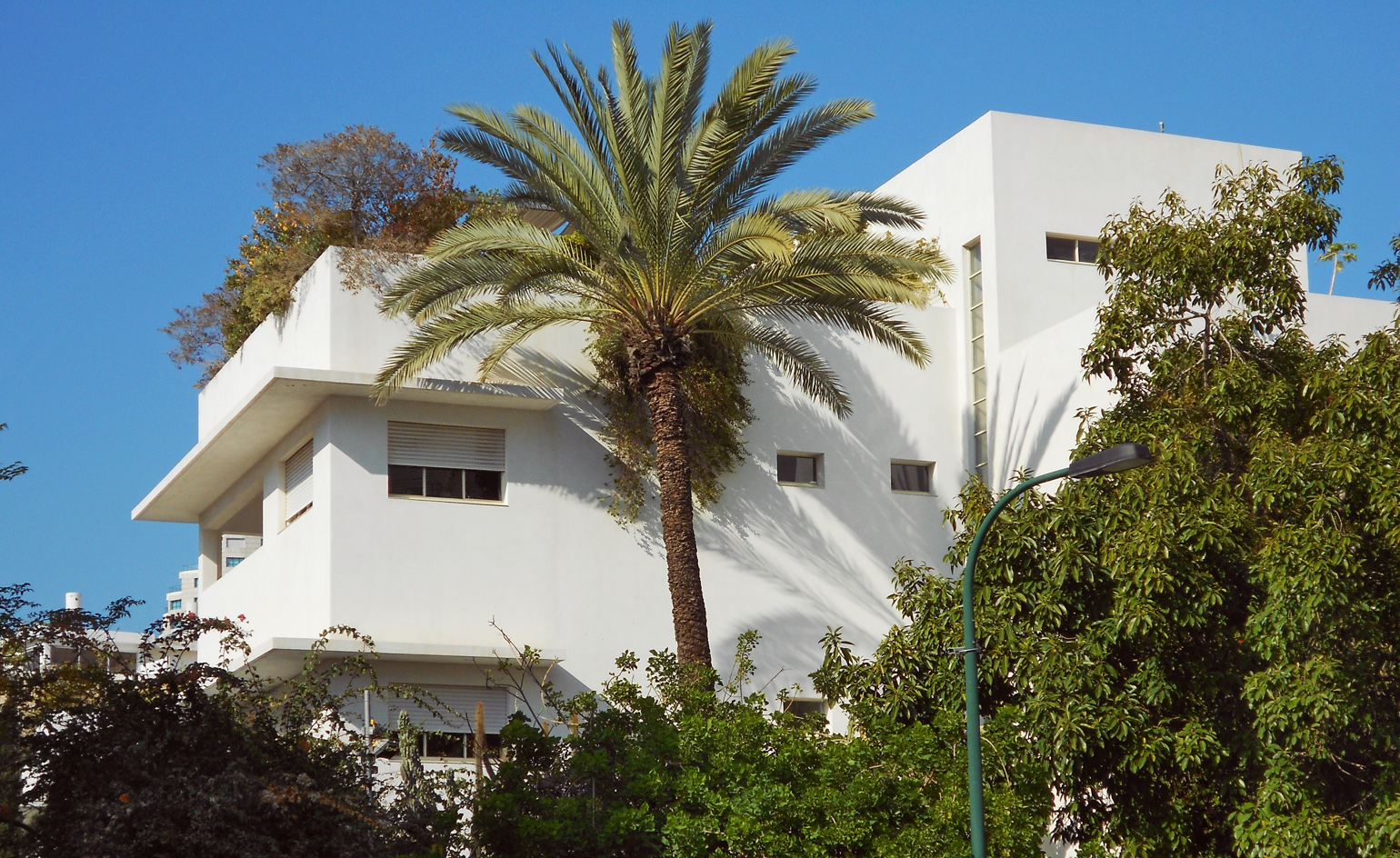 White city: the remarkable history of Bauhaus in Tel Aviv
White city: the remarkable history of Bauhaus in Tel Aviv -
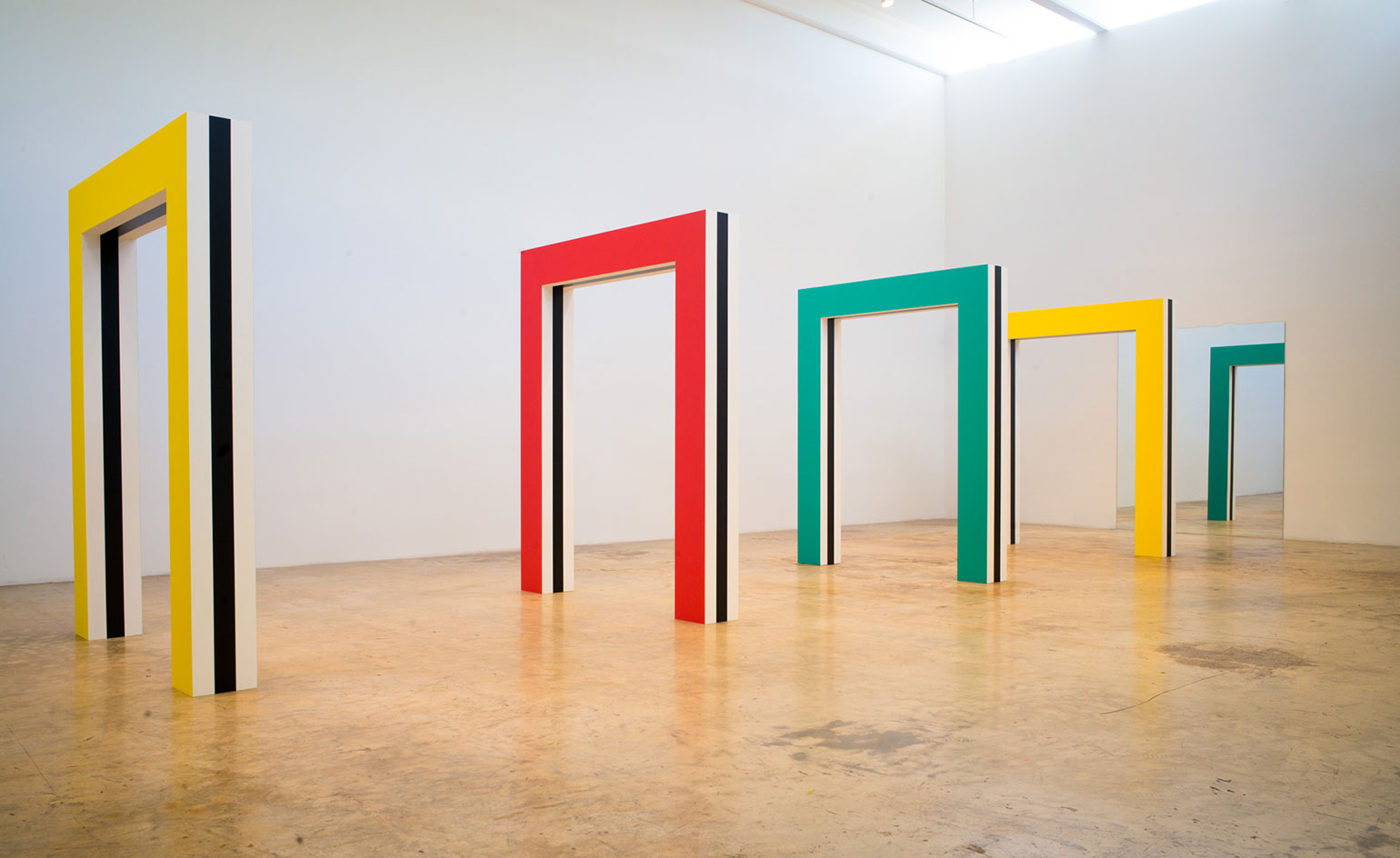 City limits: Bortolami Gallery’s ’Artist/City’ upends the traditional exhibition model
City limits: Bortolami Gallery’s ’Artist/City’ upends the traditional exhibition model